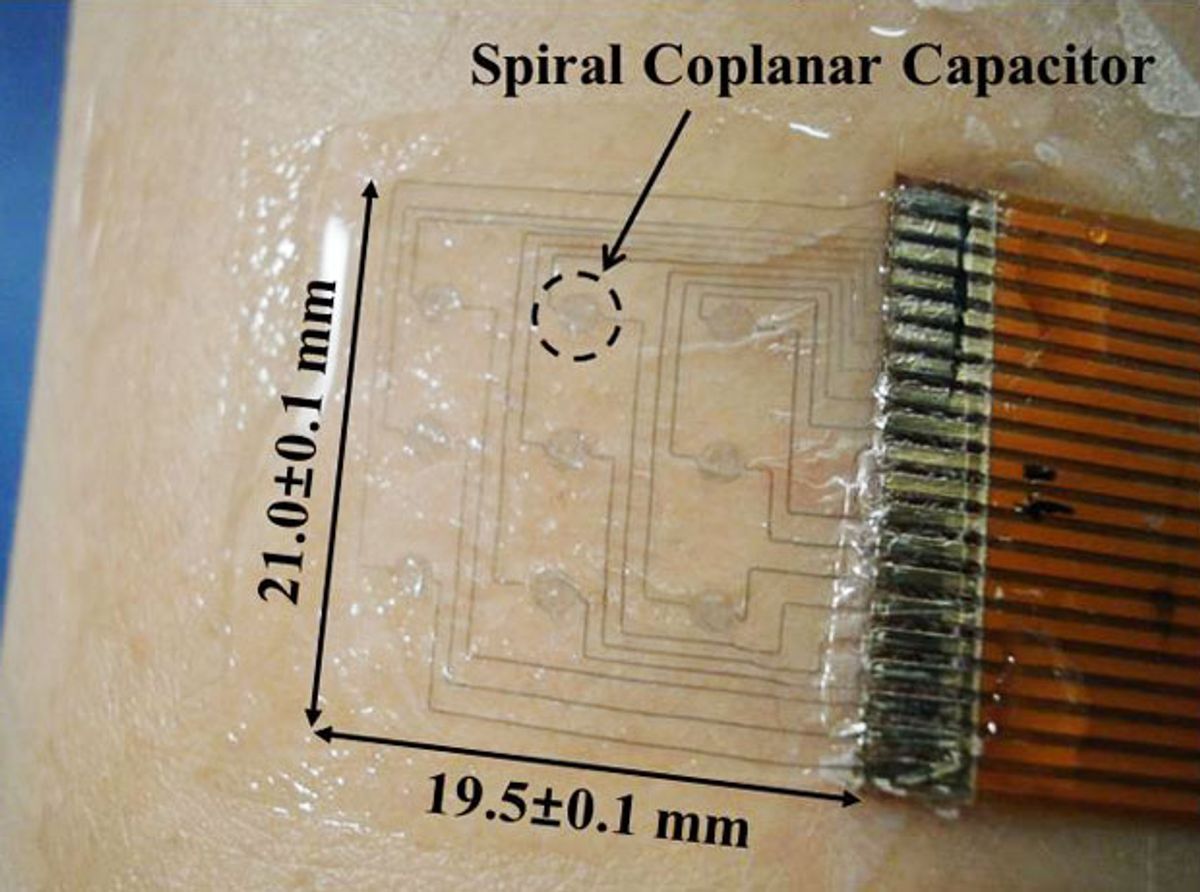A swell of music that evokes a long-forgotten memory, the rising tension of a horror film, or a sudden drop in temperature can all lead to tiny goose bumps on human skin—a physical response sometimes related to emotional states. New skin sensors capable of tracking such hair-raising moments in life could someday help detect a person's reaction to a new movie or online advertisement.
The flexible polymer sensor, about the size of a postage stamp, was developed by researchers at the Korea Advanced Institute of Science and Technology (KAIST) in Daejeon, South Korea. Such technology can detect goose bumps (or piloerection, as researchers call them) based on the changes in the flat shape of the electronic sensor and the related decrease in capacitance.
"We found that the height of the goose bump and the piloerection duration can be deduced by analyzing obtained capacitance change trace," said Young-Ho Cho, a professor of bioengineering and mechanical engineering at KAIST, in a press release.
Cho and his colleagues built their sensor using a conductive polymer called PEDOT:PSS, a flexible material compared to more brittle, metallic materials. They combined the polymer with a type of flexible silicon that is also biocompatible to create a sensor just 1.2 micrometers thick and 20 millimeters on each side, as detailed in the researchers' paper in the journal Applied Physics Letter.
The triggering of goose bumps varies from person to person, of course. Any future goose bump sensing device would presumably be paired with other sensors capable of helping to narrow down the physical or emotional response that had triggered goose bumps in a person. (To test their sensor, the researchers didn't try to evoke some emotional goose bumps and relied instead on an eager test subject who grabbed ice cubes to give himself a cold shock.)
Still, the prototype sensor hints at future devices that could help monitor the physical and emotional states of consumers in real time. Cho suggested that human emotions could be tracked in the future as easily as body temperature or blood pressure. As a next step, the team aims to miniaturize the signal processing and capacitance measurement parts of the system to make the sensor even smaller and less obtrusive.
Jeremy Hsu has been working as a science and technology journalist in New York City since 2008. He has written on subjects as diverse as supercomputing and wearable electronics for IEEE Spectrum. When he’s not trying to wrap his head around the latest quantum computing news for Spectrum, he also contributes to a variety of publications such as Scientific American, Discover, Popular Science, and others. He is a graduate of New York University’s Science, Health & Environmental Reporting Program.



